Ever seen a cat on a leash? It's quite the sight! With proper leash training for cats, your feline friend could also enjoy safe, supervised outdoor adventures.
Instead of a bounding dog at the end of the tether, there's a sprightly feline, exploring the world at its own pace. It's less of a walk, more of an adventure with a furry friend.
But why put Kitty in a harness? Is leash-training your cat a good idea?
We're about to unravel the pros and cons of this unique practice. If you're up for a new pet-care challenge, stick around. This could be a fun new chapter for you and your feline companion!
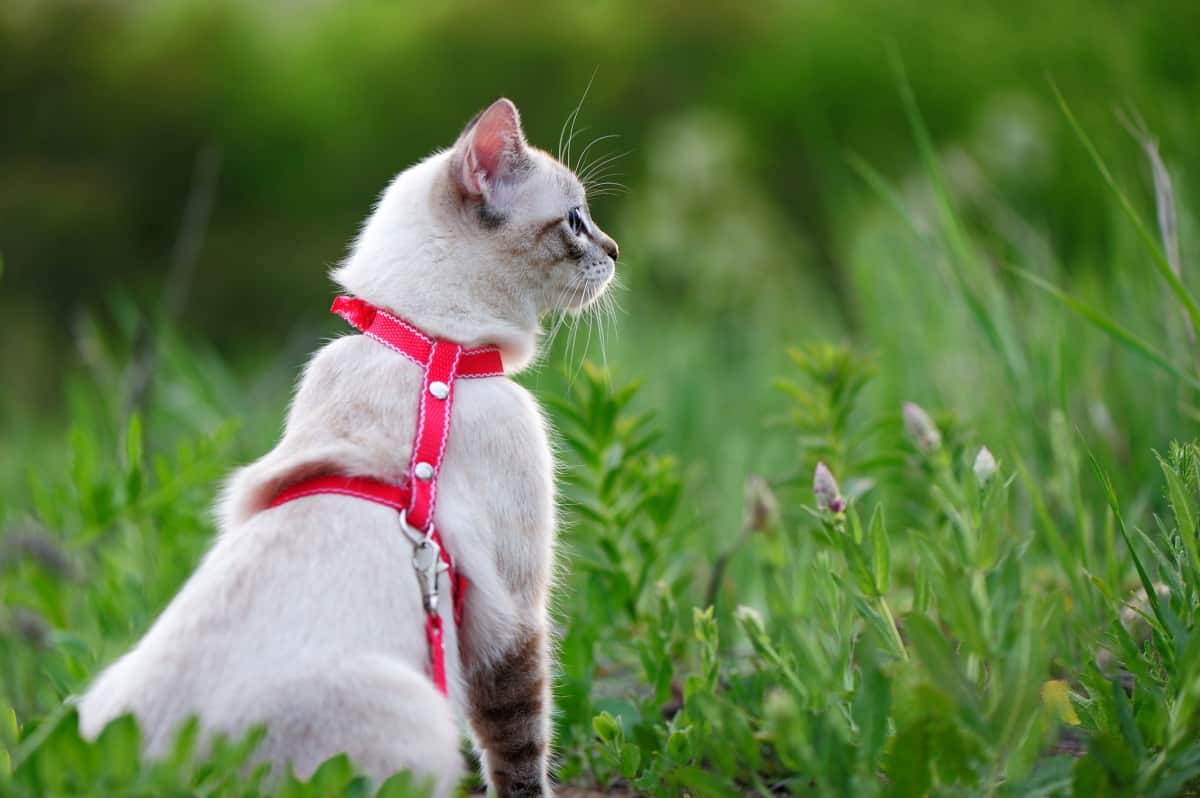
Should I Leash Train My Cat?
Some cat experts argue that it's beneficial to leash train every cat, even if you don't plan on regular outdoor adventures. The rationale? Safety.
Whether you're traveling or making a trip to the vet, a harness and leash can provide an extra layer of security during any time spent outside the carrier.
Harness Training: A Gateway to Safe Outdoor Exploration
Of course, with most cat owners, the main motivation for leash training a cat is to be able to provide it with controlled, restricted, and hence safe access to the great outdoors.
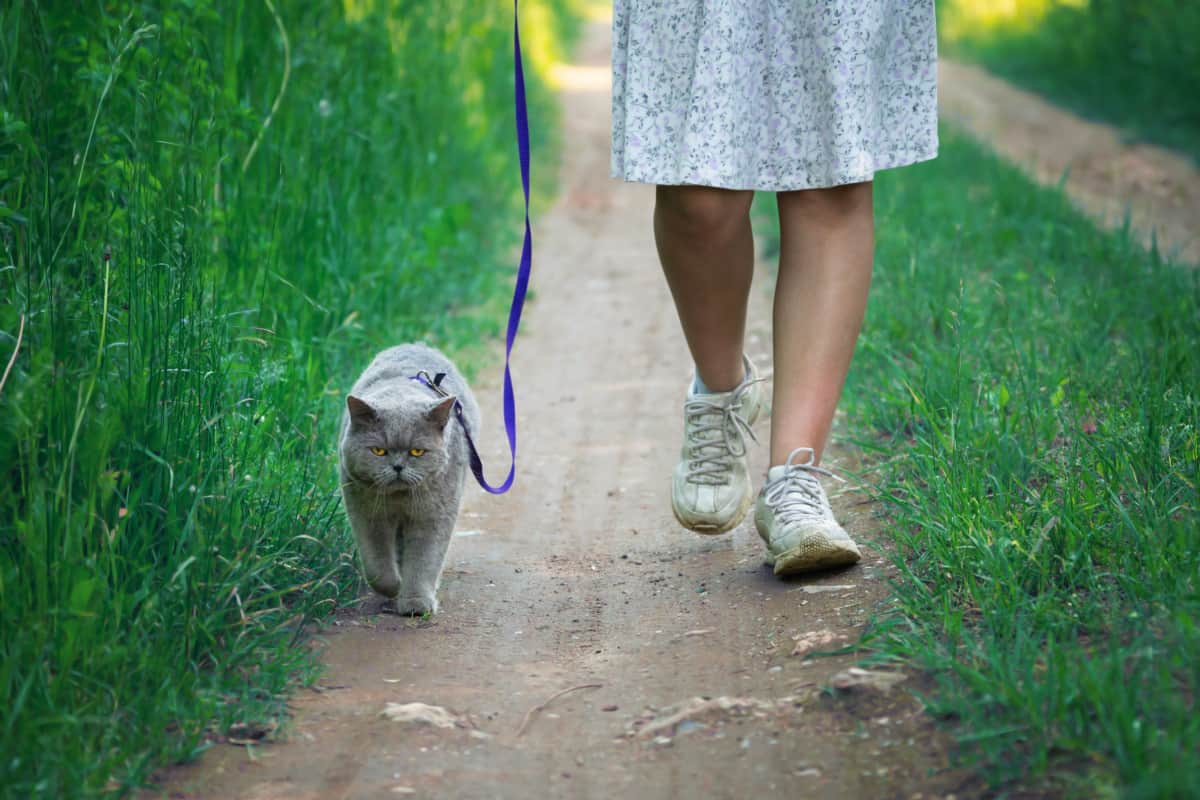
The sights, sounds, and smells, and the new tactile stimulation of walking on grass, earth, or even snow, can indeed provide a cat with an enriching adventure.
What's more, frequent walks near your home may help familiarize your cat with the surrounding area.
In case your cat ever gets outside by mistake, she may be less prone to panic and more likely to stick around and even find her way back home.
Potential Risks of Outdoor Exposure
Having mentioned the advantages, it's time to point out the possible shortcomings of letting your cat outside even when harnessed and leashed.
First, some cats are simply too intimidated by being outdoors.
Growing up indoors only seems to bring about a feline version of agoraphobia in some cats, where being outdoors could be too traumatic for them.
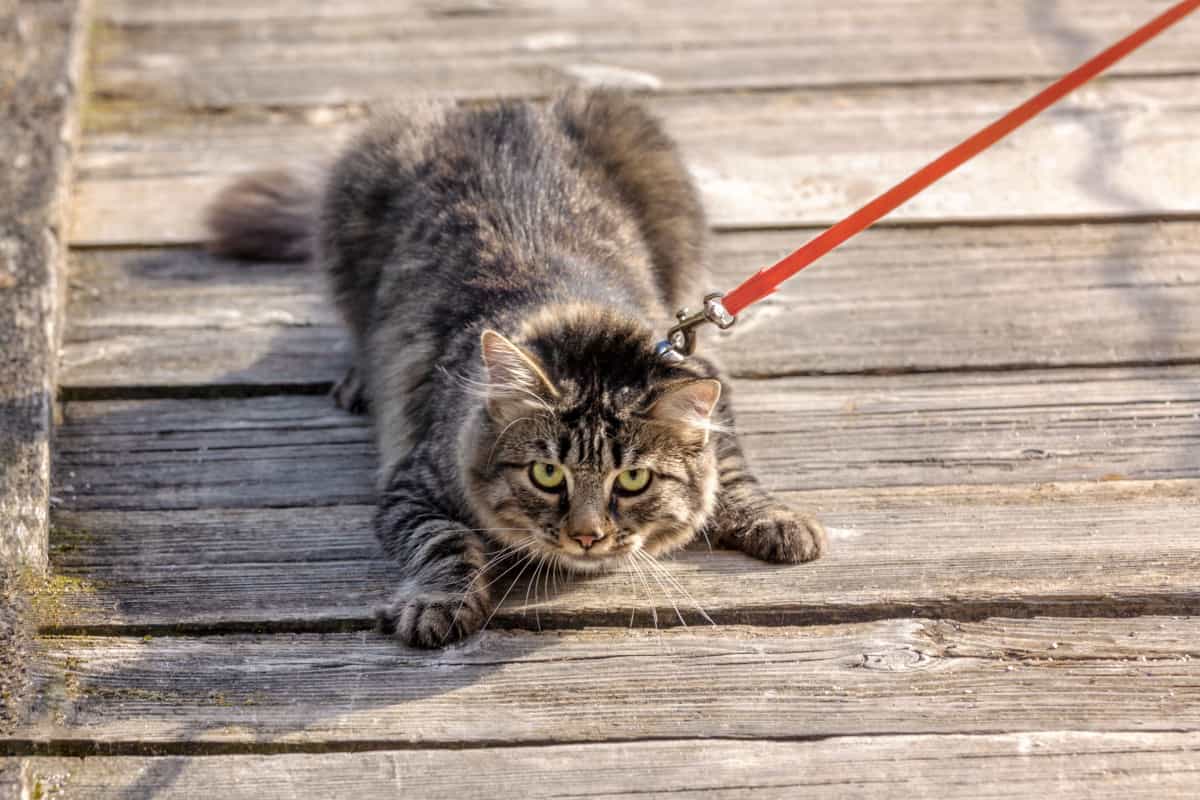
Strange cats around your home could increase the sense of fear, as your cat can sense their scents even when no cat is in sight.
Health Considerations - Leash Training For Cats
Outdoor exposure can potentially expose your cat to parasites like fleas and ticks, or even diseases carried by other cats.
There's also a risk of ingesting foreign substances or foods.
One cat owner reported that her leashed cat managed to hunt a mouse while out on a walk, illustrating that outdoor risks can be unpredictable.
So, should you leash-train your cat?
Harness and leash training can be a beneficial skill for your cat, but deciding to venture outdoors requires careful consideration of the pros and cons, taking into account your cat's temperament and your specific surroundings.
Choosing the Right Cat Harness and Leash
Your cat may already be sporting a collar, but it's important to remember that this should never be used as an attachment point for a leash.
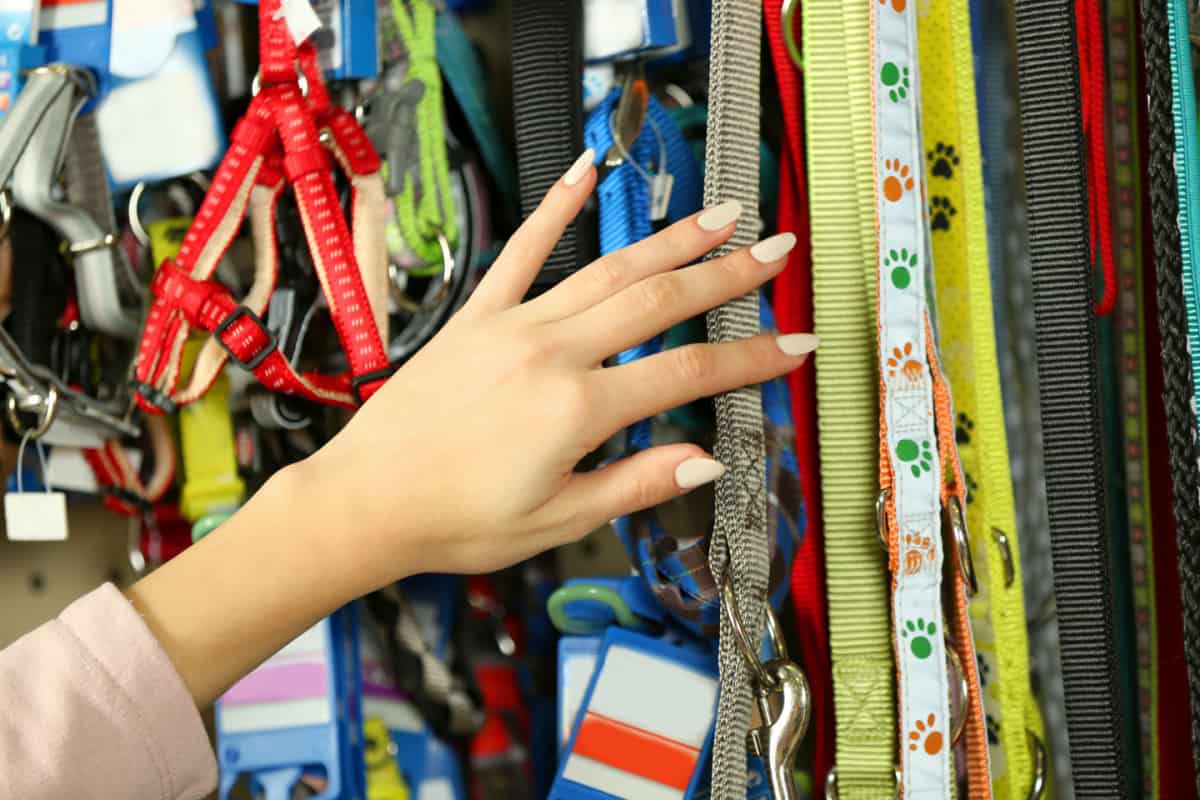
Cat collars, often referred to as breakaway collars, are designed to open or allow your cat to slip free when pulled. This is not a feature you want in play when you're out and about.
Harness: A Safer Alternative for Outdoor Adventures
Cat harnesses are specifically designed for those moments when you need to have your cat on a leash, such as during outdoor walks.
Unlike collars, harnesses won't break away if they get caught on something. However, it's crucial to never leave your cat in a harness unsupervised, whether indoors or outside.
Exploring Different Types of Cat Harnesses
When it comes to choosing a harness for your cat, there are three main types to consider:
1. "H" Type Harness
This design connects two loops with an additional piece, forming an "H" shape when viewed from the side.
Many cat owners prefer this type as it seems to exert less pressure on the cat's neck. It's worth trying out to see if it's comfortable for your cat and easy for you to use.
2. "8" Type Harness
The "8" type is a simpler design, consisting of two loops that encircle the cat's neck and torso, connected at the back of the neck.
While it's less complex than the "H" type, some owners find it less comfortable for their cats.
3. Holster Harness
Some cat owners favor the holster type, claiming it to be more secure and comfortable for their cats than either the "H" or "8" types.
This design typically covers more of the cat's body, providing a secure fit that's less likely to slip off.
Remember, the best harness for your cat is the one they're most comfortable in and that you find easy to use.
It may take some trial and error to find the perfect fit, but your cat's comfort and safety are worth the effort.
Selecting the Right Leash
When it comes to the leash, a short and very lightweight one is all you need. This ensures your cat can explore freely without being weighed down.
How to Harness Train Your Cat
So, you've decided you want to harness and leash train your cat, and you have the gear ready. Now what?
Well, get plenty of cat treats and gather up your patience.
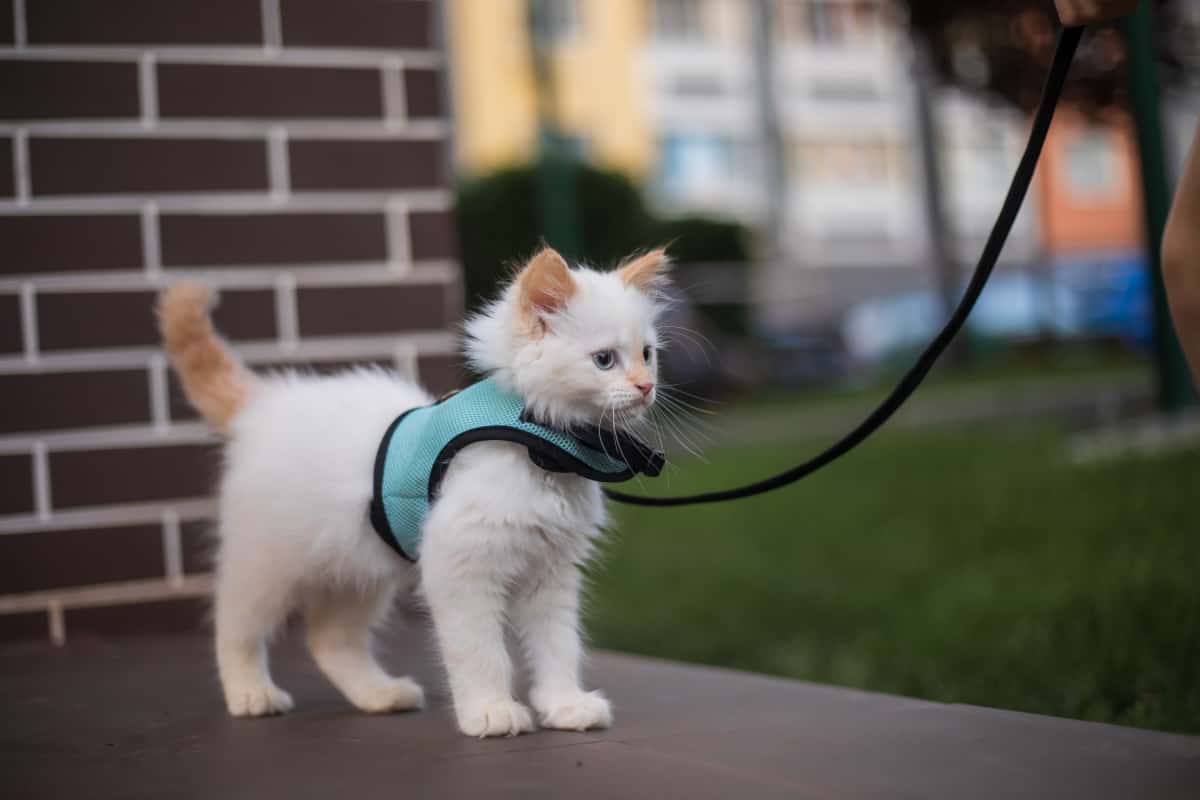
Before you start, keep in mind that not every cat can be trained to walk with a leash and harness, so give it a try, but work with your cat and respect her needs.
SIGN UP FOR THECATSITE'S EMAIL UPDATES >
1. The Basics of Harness Training
The principle of harness training is relatively simple. You want to gradually de-sensitize your cat to the touch and feel of the harness.
First, just put the harness on your cat and try to distract her with a treat or a favorite toy.
If you can, buckle up the harness, but if there is any sign of resistance, don't use force; leave the harness on and quickly distract your cat with a treat.
2. Building Comfort with the Harness
You aim to get the cat used to wearing the harness, all buckled up, for at least fifteen minutes a day.
You must always keep calm and casual about it and never use force or get upset with the cat.
Bribery is allowed and even recommended in this case, so keep a supply of your cat's favorite treats and toys in hand.
With time, your cat may actually begin to associate the wearing of the harness with the fun time of treats and toys, so she or he may even welcome "harness hour."
2. Introducing the Leash
Once the cat seems relaxed while wearing the harness, it's time to attach the leash. You are still indoors, so there is no need to even hold the leash.
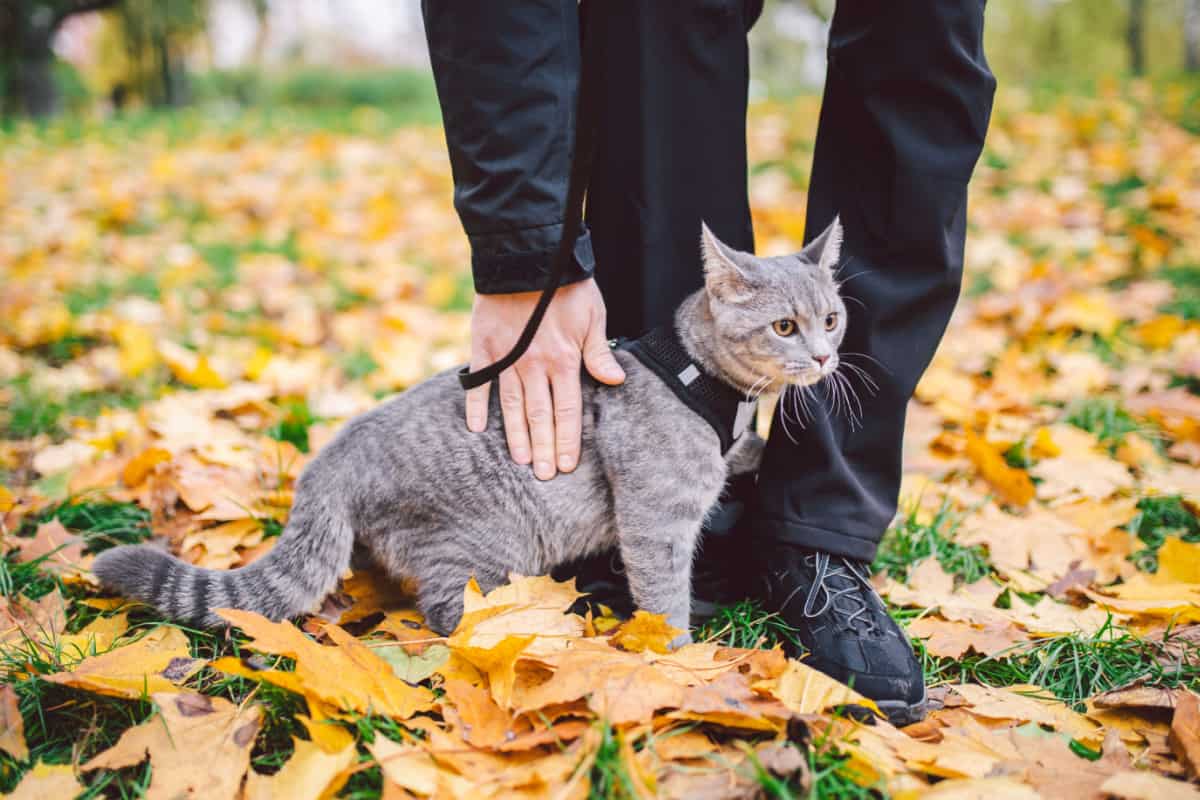
Just let it drag behind gently (remember, it should be a lightweight one), and keep Kitty's mind on her treats.
In the next phase, once your cat seems accustomed to the presence of the leash, it's time to pick up one end of the leash and follow Kitty around the house.
3. Learning to Follow: Expert Advice
A cat expert Pam Johnson-Bennett, author of "Think Like a Cat: How to Raise a Well-Adjusted Cat--Not a Sour Puss," offers an additional phase to the process.
Once you get to the leash-holding phase, while still safely indoors, take a step forward in front of your cat. Hold out a treat at eye level.
4. Practicing the "Let's Walk" Command
As your cat sniffs and walks over, say out loud, "Let's walk."
Give her or him the prize and repeat, taking another step forward, holding out another treat (keep a stock in your pocket for this exercise), and again repeat the words "Let's walk" and provide the treats as your Kitty takes those steps following you.
Repeat this several times until your cat becomes used to following you.
Johnson-Bennett then recommends introducing very gentle tugs to the procedure and practicing indoors for several weeks.
5. Taking the First Outdoor Stroll
Only when your cat is completely comfortable with walking on a harness and leash, you may attempt those first outdoor strolls.
Keep a walking routine close to home and in familiar surroundings. Your backyard is probably the best-suited place for it.
Make sure there are no unexpected dogs or foreign cats en route.
6. Staying Alert During Outdoor Walks
Follow your cat as she or he explores the area, but stay alert. If you notice a potential problem or disturbance, calmly pick up the cat in your arms and walk back home.
The Verdict on Cat Leash-Training
Leash-training your cat can open up a world of safe outdoor adventures, enriching their life with new sensory experiences.
However, it's crucial to weigh the potential risks and rewards and to choose the right equipment for comfort and safety.
With patience and respect for your cat's temperament, this could be the beginning of a thrilling new chapter in your feline friend's life.
Check out below some cute photos of cats on the leash that are kindly submitted by our forum members on TheCatSite.com forums.
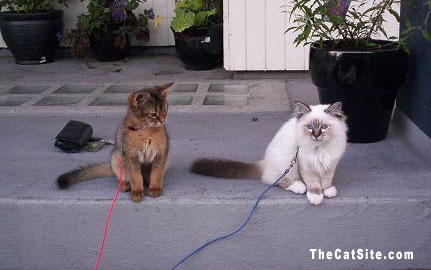
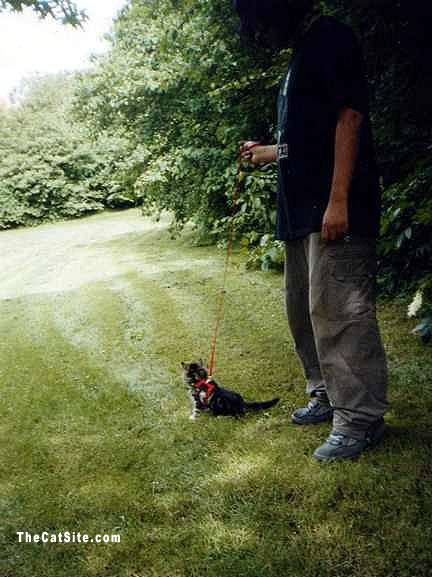
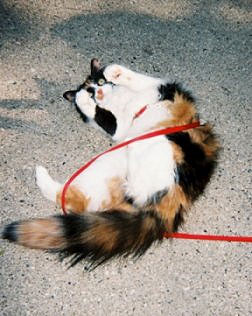
Don’t forget to spread what you learned here by sharing this article with your friends and family. You can easily do so by pinning the image below to your social media account.
SIGN UP FOR THECATSITE'S EMAIL UPDATES >
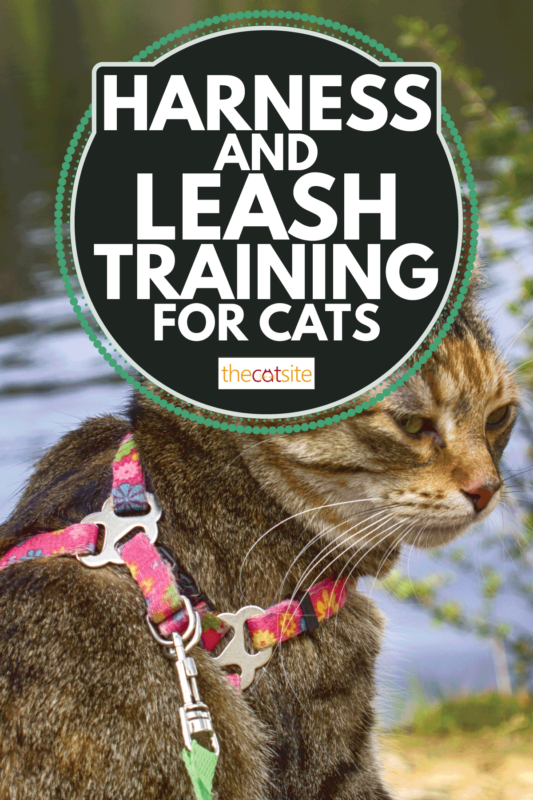
For more interesting articles to read, check out below.
New Cat Checklist: What You Need To Get Before Bringing Kitty Home
Note: We may get commissions for purchases made through links on this page.






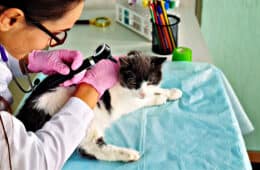
3 comments on “Harness And Leash Training For Cats”